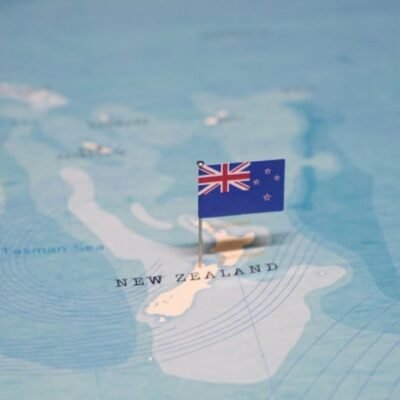LAS VEGAS (KLAS) – Las Vegas City Hall does not display nor possess a photo of the mayor considered “the most controversial” in the town’s history, but historians say his tumultuous term is worth learning.
In the 1930s the hot button issue which defeated or aided Las Vegas politicians was who controlled the power, more specifically the Southern Nevada Power Company, now known as NV Energy.
Las Vegas Mayor Ernie Cragin’s defeat in 1935 for his second term was likely tied to allegations of his connections to the power company publicized by his opponent, Leonard Arnett. It would continue a conversation in the young city about whether the power company should be privately or municipally owned.
At the time U.S. President Franklin Roosevelt’s New Deal, a financial reform program which focused on domestic public works projects, was a major factor in Las Vegas politics. Mayor Arnett campaigned for federal funds through the New Deal to be put towards a power plant and transmissions lines from the new Hoover Dam.
During Arnett’s term, the area experienced an economic downturn and the Las Vegas Commission, now known as the Las Vegas City Council, appointed a board of leaders to find a fiscal answer to the mayor’s power company solution.

The board found Arnett’s idea to be too risky and soon after the mayor took a leave of absence—and ran a chicken ranch in California.
The real estate developer
In 1909, John Lewis Russell, a native of North Dakota, stood in an open field with both hands placed down on a pitchfork readying for a family photo. The railroad worker, turned real estate developer, would become a firebrand figurehead for Las Vegas, according to UNLV historian, Dr. Michael Green.
“John Russell had been a real estate developer who got involved in the Las Vegas Taxpayers League in the 1930s,” he said. “His goal was to fight increases in city spending.”
After Arnett’s absence, Las Vegas Commissioner Harmon Percy Marble, a newspaper owner and photographer, took over as the city’s mayor before losing an election to the leader of the Taxpayers League, John Russell.
Russell started his term in 1939 and said he would bring “sound financial policy, keeping municipal expenditures at the lowest point consistent with progressive policies.” However, the new mayor would first need to win over his fellow commissioners—a skill he lacked.
“Well, he got into it with his fellow city commissioners,” Green said. “He wanted a lower tax rate than they did, and he had changed his mind and now [Russell] wanted municipally owned electricity, and they were hoping that fight had been over.”
It had soon become clear Russell was a mayor who did not hide his feelings well and had a habit of attacking anyone who disagreed with his agenda, calling them “corrupt and stupid.”
“That wasn’t conducive to building a coalition,” Green said. “Eventually he got fed up. The commissioners got fed up with him.”

On Dec. 21, 1940, the other four Las Vegas Commissioners resigned, but the city attorney ruled that the elected officials had to meet as a board for their resignations to be accepted. When they met again, they changed their decision to resign however it was too late—Russell created a second government.
Two rival governments
The two governments, one newly appointed by Mayor Russell, met in the same room and had papers run between them by the city clerk to be signed.
One of the top issues on the agenda came from the Las Vegas Army Air Corps which was trying to get a gunnery school set up during World War II.
“This is the gunnery school that would become Nellis Air Force Base,” Green said. “And there are two sets of signatures on it because they couldn’t get an agreement.”

By Apr. 20, 1940, the city’s affairs would become the target of an investigation and grand jury trial. Joe Ronnow, a Las Vegas Commissioner, made the motion for the grand jury along with support from his fellow commissioners, according to an article from the Las Vegas Age.
“It was done with the desire to lay all actions of the board and other city employees open to inspection in the hope that the constant disagreement and bickering which has characterized the present city administration for the past year to the annoyance of the people and discredit to the good reputation of the city, be finally brought to an end,” a Las Vegas Age reporter wrote.
On May 10, 1941, Russell’s turbulent term would result in charges of malfeasance by the old city commission with the goal of removing the mayor from office.

“They convicted him themselves, it wasn’t a court case,” Green said. “Russell resigned in May.”
Two months later the former mayor left the city limits and went up to Mt. Charleston with some friends, but he would never return to Las Vegas.
Identifying the mayor’s body
On July 19, 1941, Russell traveled to Deer Creek with a man and a woman before attempting to venture further to the Kyle Canyon area past the Charleston Park Lodge shortly before 3 p.m., according to a newspaper report.
While at the campgrounds Russell fell over and died almost instantly from a heart attack. An hour later a telephone call was made to Clark County Sheriff Gene Ward relaying “John Russell” had died.

A coroner quickly rushed from the Las Vegas Valley up to Mt. Charleston to see the body of the former mayor. Charles Travis, the lodge manager, and Leo McNamee, a Kyle Canyon resident and Las Vegas attorney, stood at the campgrounds and identified the former mayor.
Russell was buried at Woodlawn Cemetery days later. The inscription on his headstone reads, “Las Vegas’ Progressive Mayor.”
The former mayor’s sister, Julia Ann Russell, and mother, Mary Jane Russell, were both buried next to him. Julia’s obituary shows two surviving sisters: Mrs. Margaret Johnson of Las Vegas, and Mrs. Cora Kenmir of Alhambra, California.
Russell’s death certificate shows he was never married and lists his occupation as a “farmer and railway maker,” with no mention of his time as mayor of Las Vegas.
Russell Road
According to documents from the Clark County Heritage Museum, Russell owned a 100-acre ranch on the outskirts of town, near what is now Harry Reid International Airport. The road that ran alongside his property would later be named after the former mayor, becoming Russell Road.
“It’s funny that Russell Road runs to the airport, which for many years, was named for Pat McCarran,” Green said. “And the mayor, who did not want municipal power was Ernie Cragin, and who was a total McCarran supporter.”
In 1943, Cragin left the California chicken ranch and returned to his seat as Las Vegas mayor, a calmer period according to Green.

“[Russell] is unusual in his time, in that, city politicians usually weren’t that vocal,” he said. “There’s been a gadfly or two involved on the commission but for the most part, the mayors have not been.”
Green said because Russell did not complete his term in office and got into many political fights quickly, he ranks higher on the “controversy meter” from a historical perspective.
“He certainly ranks as one of our more controversial mayors—there’s no doubt about that,” Green said.

A photo of Russell was placed in a time capsule at the Las Vegas Union Pacific Railroad station in 1940 and was later retrieved in 1970 before the building’s demolition.




